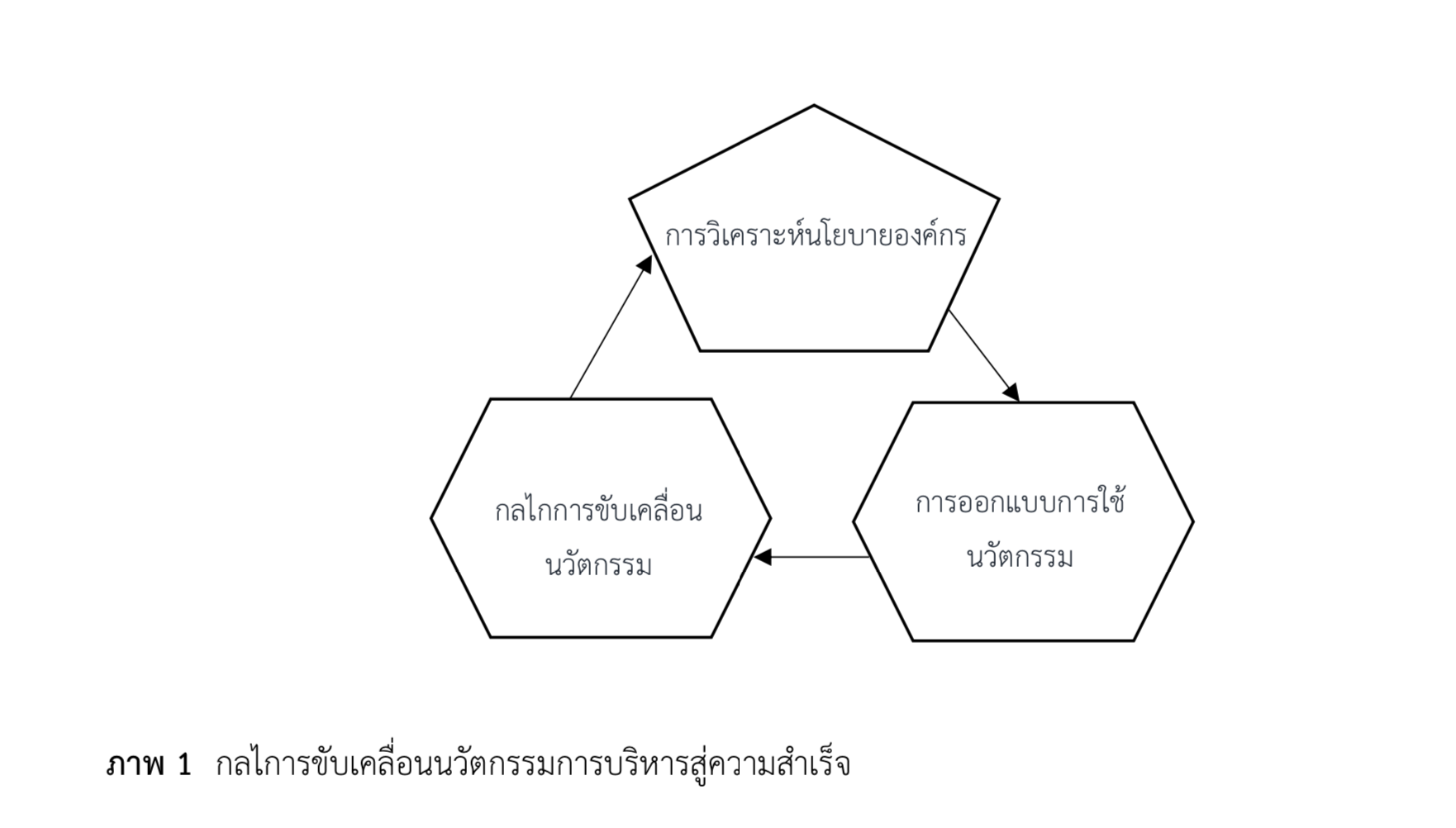นวัตกรรมการบริหารการศึกษา: กระบวนทัศน์ใหม่เพื่อการเปลี่ยนแปลงองค์กร
Main Article Content
บทคัดย่อ
บทความ เรื่อง นวัตกรรมการบริหารการศึกษา : กระบวนทัศน์ใหม่เพื่อการเปลี่ยนแปลงองค์การ มีวัตถุประสงค์ เพื่อนำเสนอแนวคิด มุมมองนวัตกรรมและการพัฒนานวัตกรรมการบริหารการศึกษา นวัตกรรมการบริหารการศึกษาเป็นแนวคิด วิธีการ เทคนิค กระบวนการ หรือสิ่งประดิษฐ์ใหม่ ๆ ที่ผู้บริหารการศึกษาหรือผู้ที่เกี่ยวข้องคิดค้นขึ้น มุ่งสร้างหรือพัฒนาขึ้นเพื่อใช้บริหารงานตามหน้าที่และขอบข่ายการบริหาร ตั้งแต่ การพัฒนานโยบาย การออกแบบองค์กร การกำกับ ติดตามและประเมินผลงานที่ใช้ในการขับเคลื่อน เพื่อพัฒนา ปรับปรุง สร้างการเปลี่ยนแปลงจนสามารถบรรลุวัตถุประสงค์ของการจัดการศึกษา นวัตกรรม การบริหารการศึกษา สามารถแบ่งได้สี่ประเภท ได้แก่ นวัตกรรมเชิงหน้าที่การบริหาร นวัตกรรมเชิงขอบข่ายการบริหาร นวัตกรรมเชิงกลไก และนวัตกรรมตัวแบบเฉพาะ ส่วนการพัฒนานวัตกรรม สามารถ นำแนวคิดเชิงการออกแบบมาใช้เป็นแนวทางพัฒนานวัตกรรม 5 ขั้นตอน ได้แก่ การทำความเข้าใจผู้ใช้งาน (Empathize) การกำหนดปัญหาให้ชัดเจน (Define) การระดมความคิด (Ideate) การสร้างต้นแบบ ที่เลือก (Prototype) และการทดสอบ (Test) ทั้งนี้กลไการขับเคลื่อนนวัตกรรมการบริหารสู่ความสำเร็จนั้น หน่วยงานควรวิเคราะห์นโยบายขององค์กร ออกแบบการใช้นวัตกรรม และสามารถขับเคลื่อนนวัตกรรมสร้างการเปลี่ยนแปลงขององค์กรตามเป้าหมายที่กำหนดไว้
Downloads
Article Details

อนุญาตภายใต้เงื่อนไข Creative Commons Attribution-NonCommercial-NoDerivatives 4.0 International License.
The authors are solely accountable for the ideas and recommendations articulated in the articles published in the LEAD Journal RU. Should there be any inaccuracies, the authors accept full responsibility for such errors.
Moreover, the Editorial Board, Editorial Team, and Committee of the LEAD Journal RU are committed to maintaining the integrity of the principles reflected in the authors' contributions.
Consequently, Ramkhamhaeng University, the Editorial Board, Editorial Team, and Editors shall not be held liable for any outcomes arising from the authors' presentation of their ideas and recommendations within the LEAD Journal RU.
เอกสารอ้างอิง
Ambrose, G. and Harris, P. (2010). Basics Design 08: Design Thinking. Singapore: AVA Book Production.
Amonsak, W. (2019). Academic Management Innovation of Secondary Schools based on the Concept of Real-life Applications of STEM Education. A Dissertation of Doctoral of Education, Chulalongkorn University.
Boonprawes, S. (2017). Innovation in Quality Management of Higher Education Institutions according to International Quality Standards. A Dissertation of Doctoral of Education, Chulalongkorn University.
Brown, T. and Wyatt, J. (2010). Essentials of Social Innovation: Design Thinking for Social Innovation. Retrieved from https://ssir.org/articles/entry/design_thinking_for_social_innovation
Chamchoi, S. (2022). Academic Management Responsive to the Changing Dynamics of the Global Era. Bangkok: Chulalongkorn University Press.
Dissakul, P. (2019). Management Innovation of Primary Schools based on the Concept of Developing Students’ Creativity. A Dissertation of Doctoral of Education, Chulalongkorn University.
IDEOU. (2022). Design Thinking Process. Retrieved from https://www.ideou.com/pages/design-thinking
Office of National Innovation. (2006). The Dynamic of Innovation. Bangkok: Science and Technology Ministry.
Royal Institute Dictionary. (2013). Royal Institute Dictionary, 2nd Ed. Bangkok: Akson Charoentat.
Siribanpitak, P. (2022). Transforming Education to Meet National Development Needs. Bangkok: Chulalongkorn University Press.
Wichitputchraporn, W. (2022). Innovation of Model Development for Implementing the Decentralization Policy to Promote Independent Administration in Basic Education School. Silpakorn University Journal, 42(4), 75-82.


